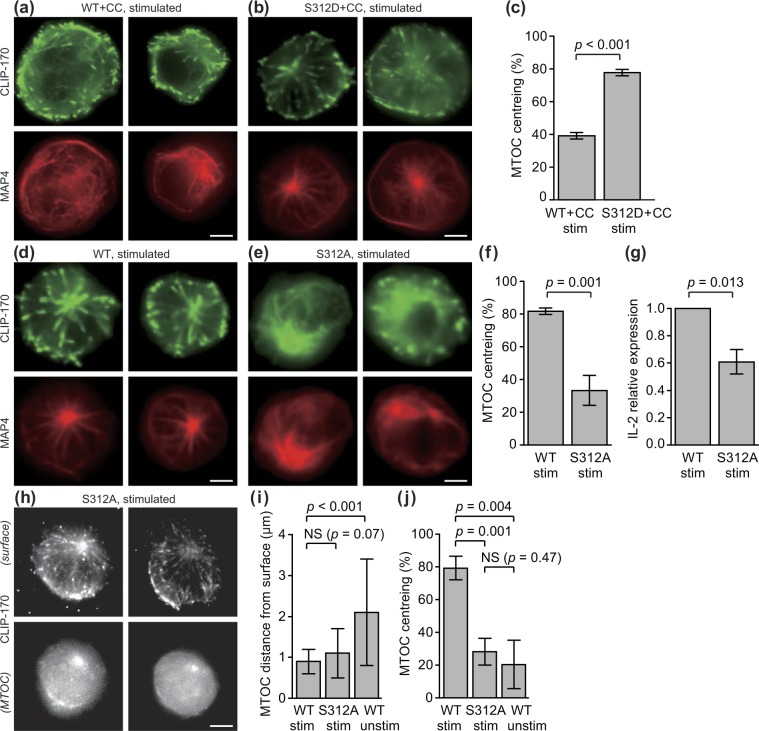Figure 2.
Both CLIP-170 phosphorylation and T cell stimulation are essential for MTOC repositioning and full activation of T cells. (a–g) A phosphodeficient S312A mutant of CLIP-170 impairs MTOC repositioning and full activation, and a phosphomimetic S312D mutant does not. Dual-colour epi-fluorescence live-cell imaging (a,b,d and e) at the contact surface in stimulated Jurkat cells using combinations of TagRFP-T-MAP4 (red, bottom) with C-terminal mEGFP-tagged proteins (green, top): wild-type CLIP-170 in the presence of 20 μM compound C (a), phosphomimetic S312D mutant in the presence of 20 μM compound C (b), wild-type CLIP-170 (d) and phosphodeficient S312A mutant (e). MTOC centreing (c,f) in Jurkat cells expressing wild-type- or S312D-mEGFP in the presence of 20 μM compound C (c) and wild-type or S312A-mEGFP (f). The relative expression of IL-2 (g) in Jurkat cells expressing wild-type or S312A CLIP-170. (h–j) MTOC centreing requires phosphorylated CLIP-170 at Ser-312, while MTOC distance from the surface is caused solely by stimulation. TIRF live-cell imaging of S312A-TagRFP-T (h) at the contact surface (top) and by epi-fluorescence at the plane containing MTOC (bottom) in stimulated Jurkat cells. MTOC distance from the surface (i), and MTOC centreing (j), quantified using the images. In panels i and j, the data in Fig. 1c and d are re-plotted for comparison. Bars, 5 μm. Data are means ± SD. Source data, Tables S1 and S3.

